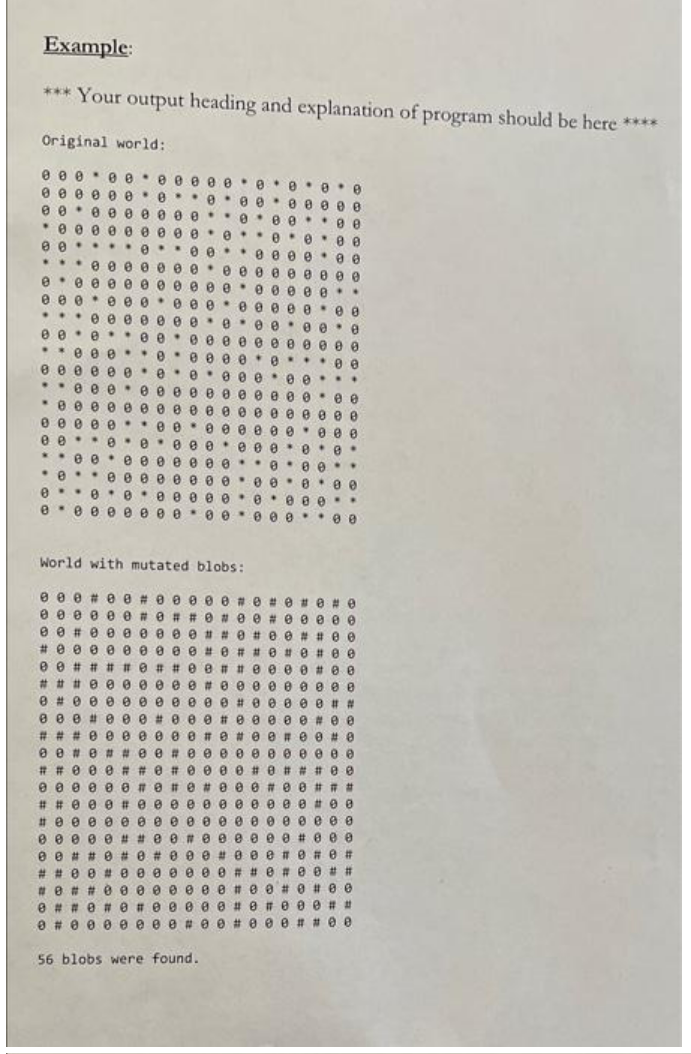kindly refer to the question below. the question below.
NOTE: each neighboring consecutive blob * are counted as one blob.
How do we count the blobs in the row and column without re visting already checked cells



Your job for this program is to use recursion to count the number of "blobs" in a 2D array. You will be given a text file containing a 2D matrix of O's and *'s. A blob is connected group of *'s. The *'s are connected if they are von Neumann neighbors (top, bottom, left or right). Follow the guidelines below. . Use constants for the number of rows and the number of columns. You will be given a 20 x 20 text file, but it is beneficial to store a border of O's around the actual blob world to make the search for blobs on the edges much easier; i.e. make your array 22 x 22 and store the blob world in locations 1..20, 1..20. Prompt the user for a filename to read in a given text file containing O's and *'s. Scan through the 2D matrix. When you find the beginning of a blob, call a recursive function that will replace all of the *'s in the blob with #'s. Print the original blob world and the mutated blob world as shown in the example. Do not print the border of O's around the actual world. Count the number of blobs found and print the total count under the worlds as shown in the example. Example: *** Your output heading and explanation of program should be here **** Original world: 0 eeeeee . eeeee @.@.@ .. . eee.ee eee. ..@@ eee ... . 0. 0.0 eeeee. @ World with mutated blobs: @#@@#@@@ eeee eeeeeeeee # #@# ee# # eeeee eeeeeeeeeee # # een #eeeeet eeeeeeeee ## eee eeee # 56 blobs were found. Program 1 Hints: If you are programming in c++, remember to include the following libraries: iostream (for reading file names from keyboard), fstream (for file reading/writing), and string (for string input/output). Either create a border of O's (character 0, not integer 0) or check for out-of- bounds before calling recursive function. IMPORTANT: Read in and print out the world before you do anything else. If you use a border of O's, remember that nested loops processing and printing should go from 1 to n-1 (with the exception of initializing the world). Scanning the 2D array is a nested loop; not recursive. This can be in the main or in a function. If an asterisk, *, is encountered, count the blob and call the recursive function, processBlob (or whatever you want to name it). processBlob, should be sent the 2D array and a specific position (row & col value). The base case for the recursive function is implied (do nothing). If an is found, it should be replaced with #and only if an * is found, make 4 recursive calls, one for each von Neumann neighbor. Start programming soon. This program is somewhat tricky. Ask for help if needed. a









